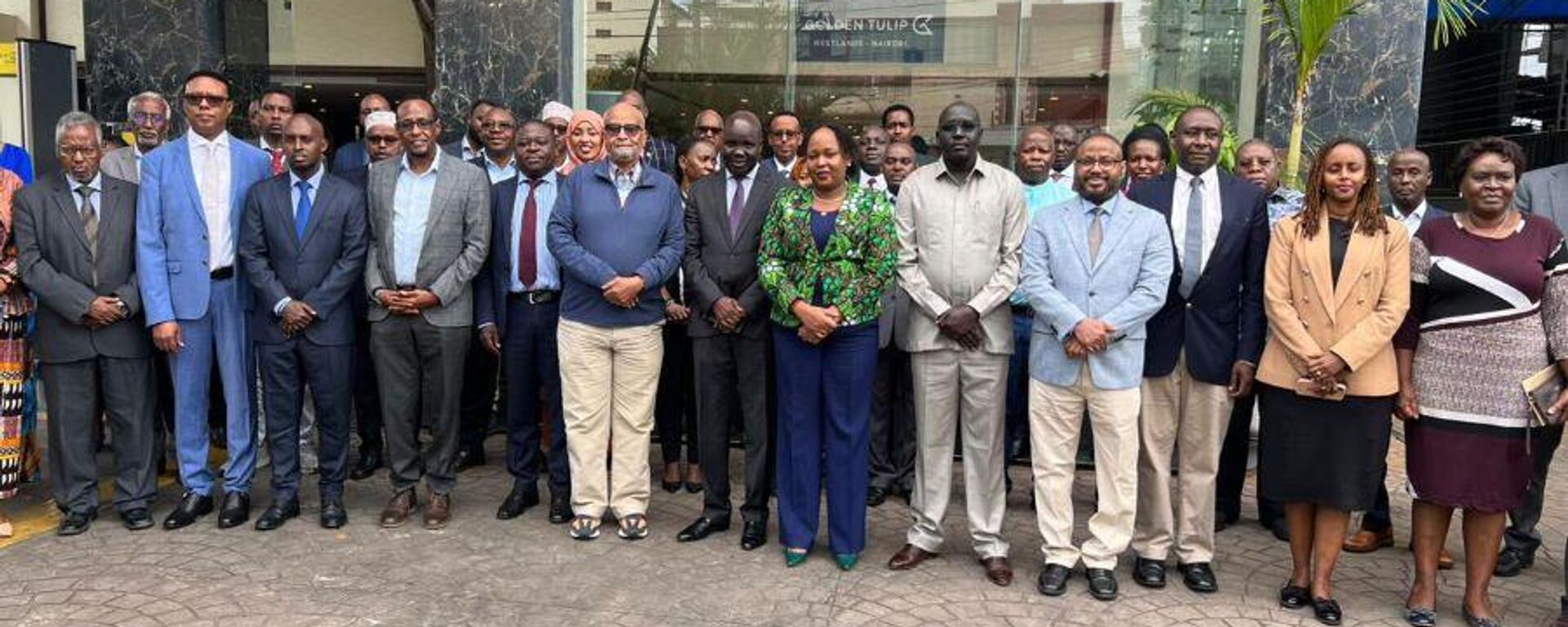https://en.sputniknews.africa/20240822/eac-revises-timeline-for-single-currency-to-2031-1067966744.html
EAC Revises Timeline for Single Currency to 2031
EAC Revises Timeline for Single Currency to 2031
Sputnik Africa
The EAC Monetary Union (EAMU) is a regional initiative aimed at establishing a single currency among East African Community (EAC) member states. Signed in... 22.08.2024, Sputnik Africa
2024-08-22T17:05+0200
2024-08-22T17:05+0200
2024-08-22T19:16+0200
sub-saharan africa
east african community (eac)
economy
currency
alternative currency
trade
inflation
east africa
taxes
https://cdn1.img.sputniknews.africa/img/07e8/08/16/1067968069_0:106:2049:1258_1920x0_80_0_0_251d1419626dd869ac72fceba34e1728.jpg
The EAC has revised its timeline for the establishment of a single currency, now aiming for 2031 instead of the initially targeted 2024, media reported, citing EAC Secretary General Veronica Mueni Nduva.Despite the delay, she emphasized that progress has been made in implementing certain aspects of the roadmap, although divisions remain among member states on several critical issues.Key milestones include the development of legal instruments necessary for establishing institutions that will support the Monetary Union. According to Nduva, these instruments are currently in various stages of the approval process or operationalization. Additionally, central banks within the EAC have successfully established the East African Payments System, a multicurrency platform that enables settlements in the local currencies of the partner states, facilitating currency convertibility across the region.She added that a legal instrument for harmonizing excise taxes has been developed and is under consideration by the Sectoral Council on Finance and Economic Affairs. Furthermore, an EAC Avoidance of Double Taxation Agreement is also being reviewed by the council.However, the road to a unified currency has encountered significant hurdles. One of the primary challenges has been the inability to reach a consensus on which country should host the East African Monetary Institute, the precursor to the East African Central Bank. Additionally, member states have struggled to effectively converge on four key macroeconomic fundamentals necessary for the Monetary Union.These fundamentals include maintaining a headline inflation rate of 8%, ensuring a foreign exchange reserve cover equivalent to 4.5 months of imports, adhering to a ceiling on the overall fiscal deficit set at 3% of GDP, and capping gross public debt at 50% of GDP for all partner states.
https://en.sputniknews.africa/20240619/eac-presents-detailed-plan-for-somalias-full-integration-into-bloc-1067128137.html
east africa
Sputnik Africa
feedback@sputniknews.com
+74956456601
MIA „Rossiya Segodnya“
2024
Christina Glazkova
https://cdn1.img.sputniknews.africa/img/07e7/0b/07/1063380906_0:0:673:674_100x100_80_0_0_79628b4d0cd9f29291a57aa13bbf9e7a.jpg
Christina Glazkova
https://cdn1.img.sputniknews.africa/img/07e7/0b/07/1063380906_0:0:673:674_100x100_80_0_0_79628b4d0cd9f29291a57aa13bbf9e7a.jpg
News
en_EN
Sputnik Africa
feedback@sputniknews.com
+74956456601
MIA „Rossiya Segodnya“
Sputnik Africa
feedback@sputniknews.com
+74956456601
MIA „Rossiya Segodnya“
Christina Glazkova
https://cdn1.img.sputniknews.africa/img/07e7/0b/07/1063380906_0:0:673:674_100x100_80_0_0_79628b4d0cd9f29291a57aa13bbf9e7a.jpg
east african community (eac), economy, currency, alternative currency, trade, inflation, east africa, taxes
east african community (eac), economy, currency, alternative currency, trade, inflation, east africa, taxes
EAC Revises Timeline for Single Currency to 2031
17:05 22.08.2024 (Updated: 19:16 22.08.2024) Christina Glazkova
Writer / Editor
The EAC Monetary Union (EAMU) is a regional initiative aimed at establishing a single currency among East African Community (EAC) member states. Signed in 2013, the EAMU Protocol aims to form a single currency within 10 years. The union seeks to enhance economic integration with progress in legal frameworks and payment systems.
The EAC has revised its timeline for the establishment of a single currency, now aiming for 2031 instead of the initially targeted 2024, media reported, citing EAC Secretary General
Veronica Mueni Nduva."The Monetary Union was expected to be established in 2024 as per the Monetary Union Roadmap. However, it has not been realized, and the timeline was therefore revised to 2031," Nduva was quoted as saying.
Despite the delay, she emphasized that progress has been made in implementing certain aspects of the
roadmap, although divisions remain among member states on several critical issues.
Key milestones include the development of legal instruments necessary for establishing institutions that will support the Monetary Union. According to Nduva, these instruments are currently in various stages of the approval process or operationalization. Additionally, central banks within the EAC have successfully established the East African
Payments System, a multicurrency platform that enables settlements in the local currencies of the partner states, facilitating currency convertibility across the region.
"Partner States have signed and are implementing a Memorandum of Understanding on Currency Convertibility and Repatriation," Nduva explained.
She added that a legal instrument for harmonizing excise taxes has been developed and is under consideration by the Sectoral Council on Finance and Economic Affairs. Furthermore, an EAC Avoidance of Double Taxation Agreement is also being reviewed by the council.
However, the road to a unified currency has encountered significant hurdles. One of the primary challenges has been the inability to reach a consensus on which country should host the East African Monetary Institute, the precursor to the East
African Central Bank. Additionally, member states have struggled to effectively converge on four key macroeconomic fundamentals necessary for the Monetary Union.
These fundamentals include maintaining a headline
inflation rate of 8%, ensuring a foreign exchange reserve cover equivalent to 4.5 months of imports, adhering to a ceiling on the overall fiscal deficit set at 3% of GDP, and capping gross public debt at 50% of GDP for all partner states.



